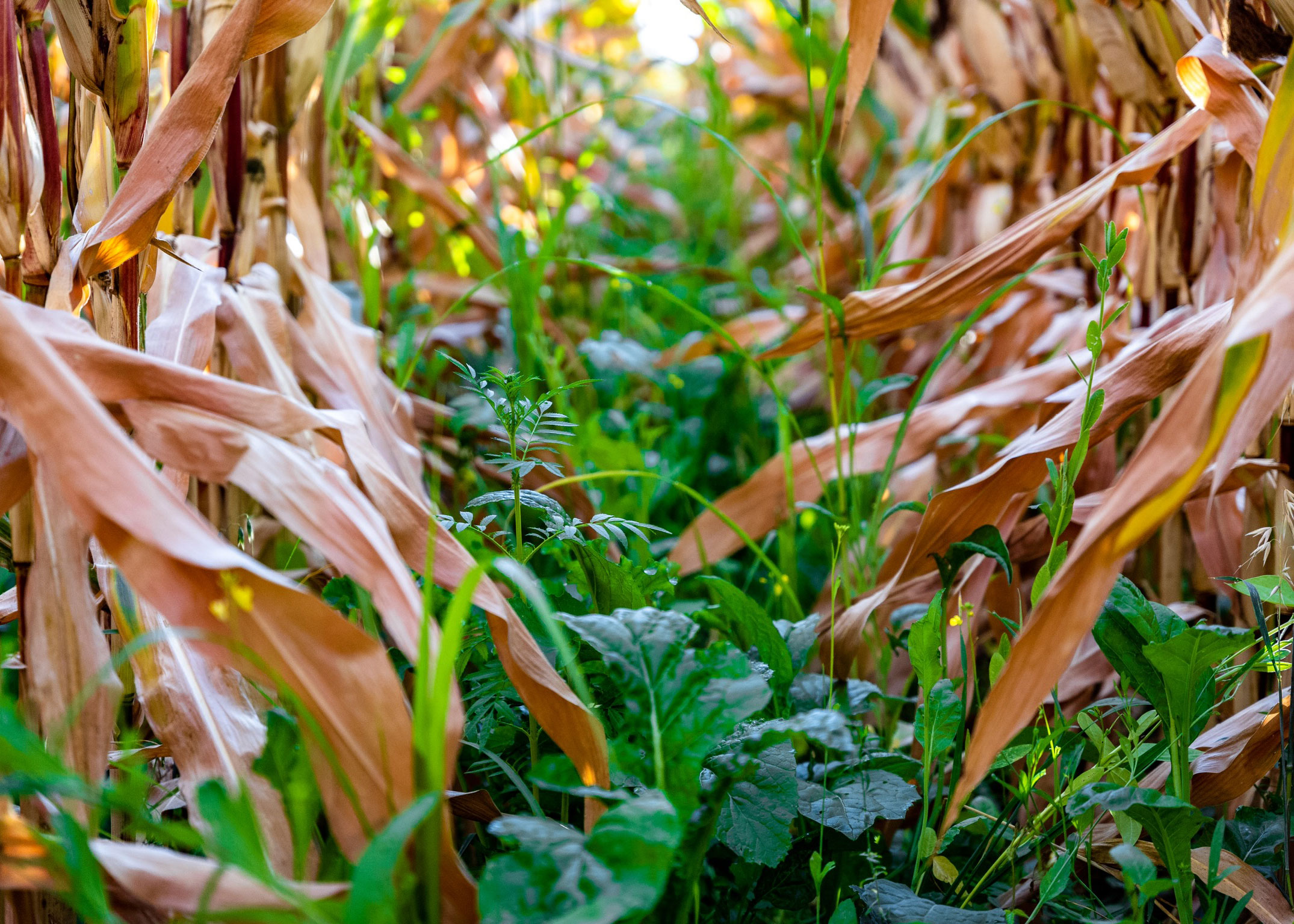
As soil health and regenerative agriculture continues to grow in popularity and use across broad acres, one common concern is how to incorporate cover crops into a corn and soybean rotation. Limited windows for a cover crop in the spring and fall, often leave rye as the only option. However, corn interseeding has been a growing interest for many farmers as it allows the chance for a diverse mix to grow amongst the cash crop throughout the year. Furthermore, once the corn is harvested, the interseeded cover crop is already in place which can limit erosion, add grazing quality to stalks, and continue sunlight collection and photosynthesis later into the season.
To get a better understanding of which cover crops and blends make sense for corn interseeding, Green Cover concocted six seed blends to trial in the 2023 demonstration plots consisting of over 20 species to find which varieties performed the best and might work to accomplish certain goals.
A couple of the mixes show tremendous promise, including two mixes with annual ryegrass, vetch, clovers, and brassicas. In general, cool season species were more shade tolerant than warm season species, thus in corn interseeding where the corn shades the ground in between rows, the cool season species do better. 60” gaps allow better growth for warm season species because of increased sunlight. The increased sunlight allowed more overall growth from each cover crop mix but also more weed pressure.
Curious to know which interseed mixes performed the best? Fill out the form below to access the full report.